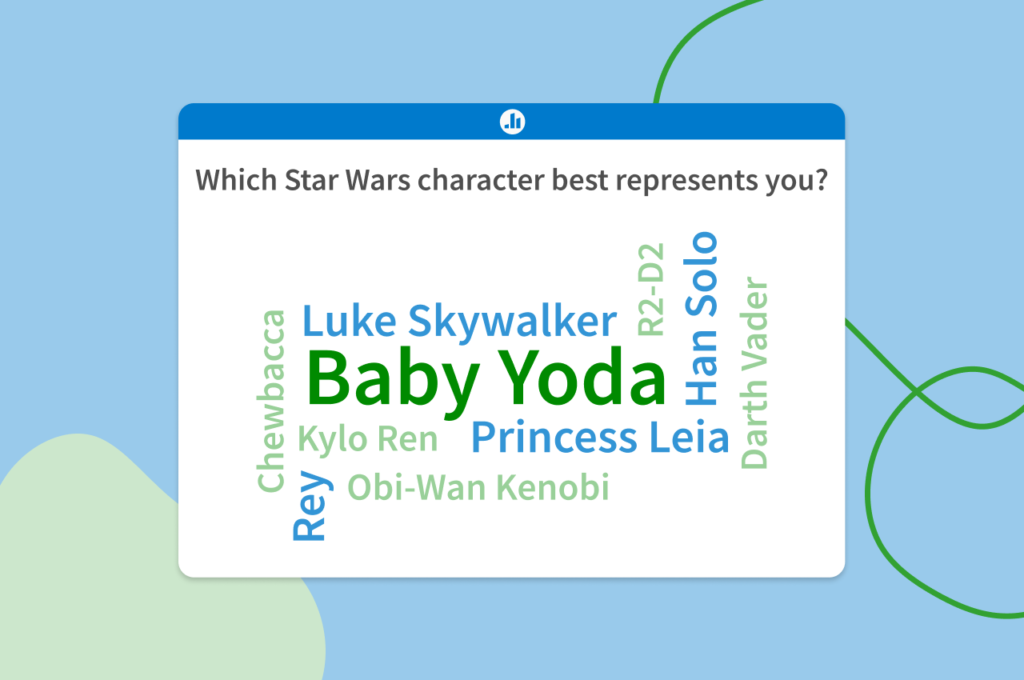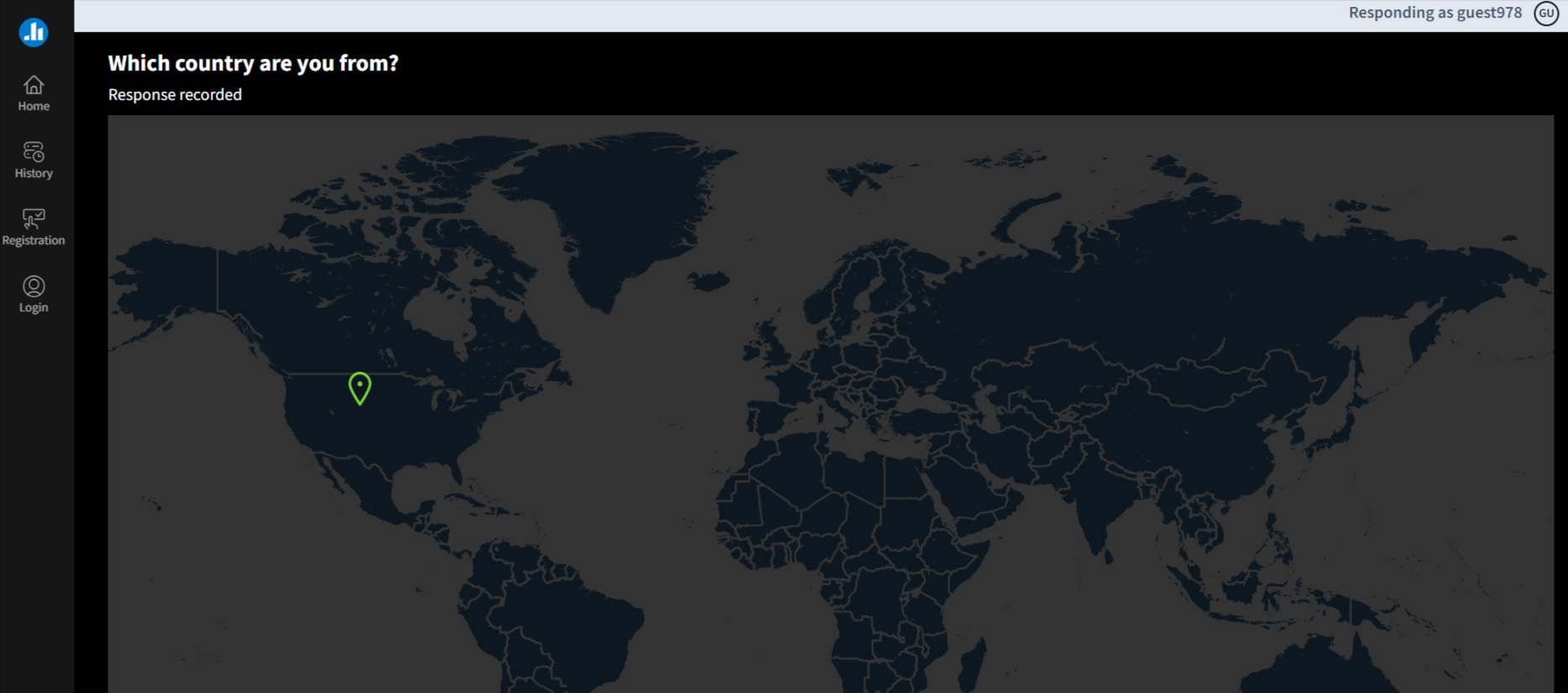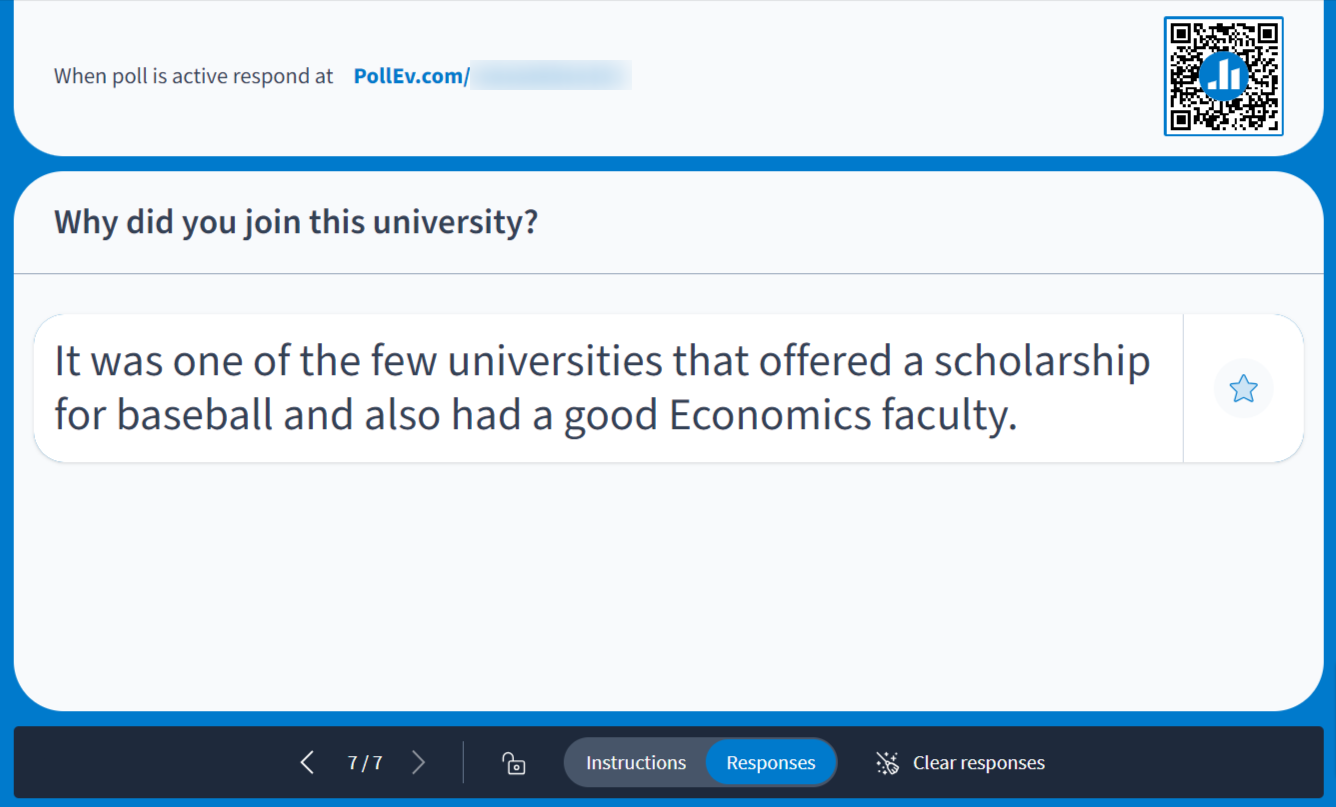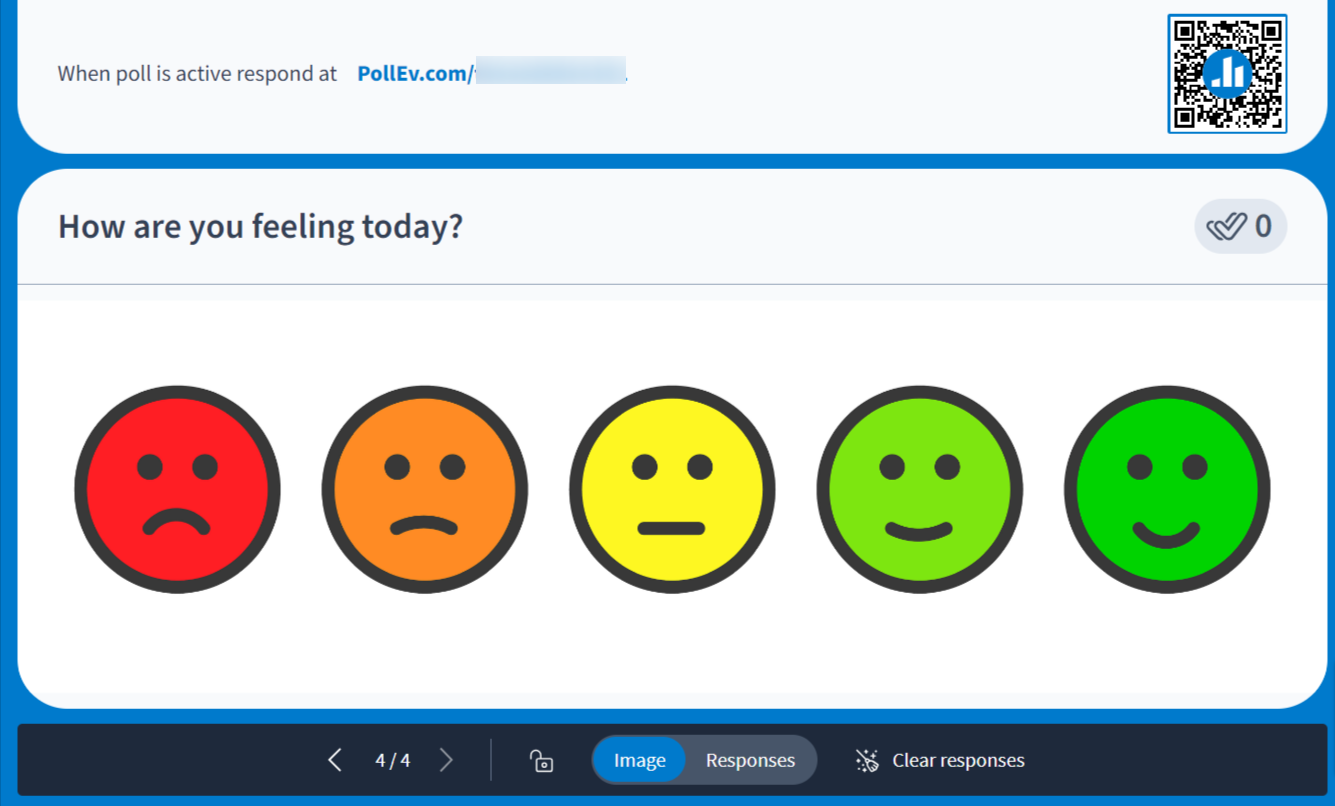17 Engaging Icebreakers for College Students to Spark Conversations

Attending university is a nerve-wracking experience for every student. For some, it’s also their first time away from home, in an unfamiliar environment.
Many students struggle to build relationships or even make friends because of social anxiety or introvertedness. Remote or hybrid schooling can make matters worse.
An excellent way to “break the ice” of unfamiliarity would be to spend time helping students get to know each other.
We've gathered 17 icebreakers for college students that you can use to create a memorable first day for your students while setting the tone for the year ahead. These icebreakers are best suited for classes under 50 students.
1. People Bingo
In People Bingo, create a grid of nine empty squares on a paper or Excel sheet. Each square has a a general prompt that’s not too personal, such as:
- Find someone who traveled to a foreign country
- Find someone who has two brothers
- Find someone who knows how to play the guitar
Distribute a copy of the grid to each student and ask them to find peers who fit each of these statements. The goal is to complete a row or column and call out “Bingo!” After they do that, ask them to share what they've learned about their peers with the rest of the group.
Time allotted: 30 minutes
When to use: First day of a new year when students don't know each other
2. Scavenger hunt
Create a list of items or clues related to the lecture hall environment. Each clue should lead to a physical object or location, acting as the clue for the next one.
Divide the class into small groups of three to five individuals and give them the clues, along with the instructions and set a timeframe for the hunt. The team that finds the most items or completes the entire game wins. This helps students get familiar with their environment in a group setting.
Time allotted: 60 minutes
When to use: Campus/class orientation, campus tours, first day of class, or mid-semester classroom breaks
3. Three of a kind
Ask students to group themselves into a group of three based on shared interests or characteristics. You can provide them with prompts such as:
- Shared interests
- Hometown
- Birthplace
- Favorite sports
- Shared classes
It shouldn't be something obvious like eye or hair color. Give them 10 minutes to find two partners with the same commonalities. After they do that, they also need to introduce their partner and another thing they learned about them.
Time allotted: 30 minutes
When to use: First day of class or to foster engagement during collaborative projects
4. Charades
In this classical icebreaker activity, you need to divide the class into different groups first. Create a list of words, phrases, or concepts relevant to your course material or the subject matter of the day.
Divide the class into two teams or more, depending on the size. For example, if you have a freshman class of 50 students, divide them into groups of five students. Ask one student from each team to act out a prompt and let their team guess it within a specific timeframe. They can only use gestures and body movements to do so. Keep rotating till every team gets their turn.
Time allotted: 30 to 60 minutes
When to use: Mid-session to improve student engagement or during relationship-building activities
5. Two truths and a lie
Make your class sit in a circle, or if you're conducting this remotely, hold a joint session with the entire class. Ask each student to come up with two factual statements about themselves and one false statement.
The rest of the class must identify which statements are true and which is the lie. Keep going around until every student has had their chance to answer. This gives students a simple way to introduce themselves and get to know each other.
Time allotted: 15 to 30 minutes
When to use: Beginning of the semester
6. How’s your mood?
This activity is designed to promote emotional awareness among college students.
Provide each student with a set of colored cards or markers representing different emotions, such as happy, sad, excited, or stressed. For remote sessions, pull up a Clickable Image Activity with different moods and ask students to choose an option based on their feelings.
Invite them to share their chosen emotion with the class, along with a brief explanation of why they feel that way. The choice to share their issues is up to the student. This activity also helps you as an educator gauge the classroom. For instance, if too many students are neutral or sad, you can either use an engagement activity to lighten the burden or invite them to have a one-on-one session with you.
Time allotted: 10 to 30 minutes
When to use: To do a gut check at the beginning, middle, and end of the semester
7. Story stitching
Story stitching is an interactive icebreaker activity conducted virtually or in person.
To engage in this activity, create groups of three or four students and hand each team member a picture. These pictures are random but come together to tell a coherent story. None of the team members can share the exact picture they have, but they can describe it in a nondescript manner and stitch a story together.
It encourages creativity and helps students engage with one another and the material in a unique way.
Time allotted: 15 to 30 minutes
When to use: At the beginning of a semester or during online classes
8. Shed your problems away
This icebreaker is aimed at reducing stress and creating a positive atmosphere in the classroom. Here, you can give each student a small piece of paper or tell them to find one.
Ask them to write down a problem or concern they have at the moment. Collect the paper, shuffle them and re-distribute the cards. Ask the student to read their card out, and the class can offer a collective solution.
You can also use Poll Everywhere to collect responses via our Open-ended activity, and the teacher can read the responses.
Time allotted: 30 to 45 minutes
When to use: Stressful periods like mid-semester or classes right before an exam break
9. Would you rather
This is a fun and thought-provoking activity that encourages students to express their preferences and engage in light-hearted debates.
Present pairs of choices to the students, starting with “Would you rather…”
For instance, “Would you rather travel back in time or into the future?” or “Would you rather have the ability to fly or be invisible?” Students take turns choosing their preferred option and explain why they chose it.
Time allotted: Five to 15 minutes
When to use: Any point in the semester to energize the class and provide a break from academic discussions
10. Name game
In this activity, you need to write down a few famous names on different cards. These names can either be of popular celebrities or even scholars who are relevant to the subject.
Shuffle the cards, and ask one student to pick out a card. Then, they need to hold it up to their head, facing the classroom, and their peers can give clues to help them guess. This way, everybody learns more about important figures.
Time allotted: Five to 15 minutes
When to use: Beginning of the semester or times when students seem disengaged
11. Guess who
This activity helps students find commonalities and build connections with their peers.
Give each student an index card and ask them to write down three facts about themselves. These facts could be about their interests or personal experiences. Split the class into several groups of 10 or more students. Now take the cards from students within the same group, shuffle them, and hand a different index card to each student. Ask them to figure out who the card belongs to. The group identifying the most individuals in a set period wins the game.
Time allotted: 30 minutes
When to use: When you start a new semester or if two different classes are getting together
12. Sweet stories
Sweet stories is focused on allowing students to share personal experiences. Here, you provide a selection of colored candy and ask them to pick one. Skittles or M&Ms are popular, so we recommend either one of those.
Ask each student to pick a candy, and depending on the color they choose, they have to tell a story. For example, if they choose a yellow candy, they must share their favorite childhood memory, but if they choose a red one, they have to talk about their favorite cuisine.
Time allotted: 30 to 45 minutes
When to use: At the beginning of the semester or mid-semester classes to re-engage the classroom
13. Show and tell
You can conduct these in in-person or online sessions. Ask each student to bring an item they cherish or point to one during an online class. It could be anything they want—a treasured possession or memento.
Every student explains why their object of choice means so much to them and shares stories related to them. It helps students get to know each other on a deeper level.
Time allotted: 15 minutes
When to use: At any point, at the beginning of the semester, or during a random class period
14. Around the globe
While cultural diversity is apparent in today’s classrooms, we need to do more to actually make it a fruitful opportunity for students to learn about each other.
You can use Poll Everywhere to present an image of the globe and ask students to pin where they’re from or a place they’ve visited. After they’ve marked their locations, invite them to share why they chose those places and any memories they associate with these places.
This promotes cultural awareness and lets students appreciate the diversity within the classroom.

Time allotted: 10 minutes
When to use: During the first session with a new batch of students or when you’re conducting a location- or culture-based discussion
15. Beach ball
This activity is meant for in-person sessions, as it’s a physical activity to re-energize the classroom.
Take an inflatable beach call with multiple colored sections and write a different prompt on each section. You can include creative ones like “What’s your favorite anime/movie?” or “What’s your favorite conspiracy theory?”
Have students sit or stand in a circle and toss the ball around. When a student catches the ball, they must respond to the question or prompt under their left thumb. Continue the same until every student has their turn.
Time allotted: 30 to 60 minutes
When to use: Either when students seem disengaged or before exam season to relieve stress
16. I chose this college because…
In this activity, ask your students to share why they chose to attend your university. Give them a few minutes to reflect on their reasoning—personal, academic or professional. Then, let them share it with their peers, encouraging a discussion about what they expect from this phase of their lives.
You can conduct this in in-person or online sessions. If you do it online, you can create an open backchannel with Poll Everywhere and let students submit their responses anonymously. You can then read it aloud and ask the other students if they resonate with their reasoning and why.

Time allotted: 15 minutes
When to use: Orientation sessions or first class for a specific subject
17. Sentence completion
This activity is a versatile one that prompts students to share information about themselves in a structured way.
Provide each student with a sentence starter or incomplete statement. For example, you can use prompts like:
- “One thing most people don't know about me is…”
- “If I could have any superpower, it would be…”
- “My favorite genre of music is…”
Ask students to complete sentences to finish the prompt. The idea is to learn more about their personalities and interests. You can either ask them to share it publicly or via a backchannel.
Time allotted: 15 to 30 minutes
When to use: Anytime you need to break the monotony and re-engage the class
Create engaging icebreaker sessions with Poll Everywhere
Icebreakers don't just allow educators to encourage informal conversations in the classroom, but they also will enable them to re-engage students during periods of stress or disengagement.
The goal is to help students understand who they're learning with and use that experience to learn from them. In the long run, this fosters a sense of camaraderie and belonging, removing the feeling of isolation that's common in new environments.
This is particularly hard to do in a remote or hybrid learning environment where students don’t get to meet each other. Even in in-person sessions, conducting icebreaker activities can feel monotonous without an engaging element in place. This is where Poll Everywhere’s icebreaker tool can help you.
You can spin up different activities using options like multiple choice questions, emotion scales, and even clickable images to add an interactive element. Students can respond without the fear of public speaking, while everybody learns more about each other.
If you’d like to see how it helps you create icebreakers effortlessly, sign up for Poll Everywhere today.


